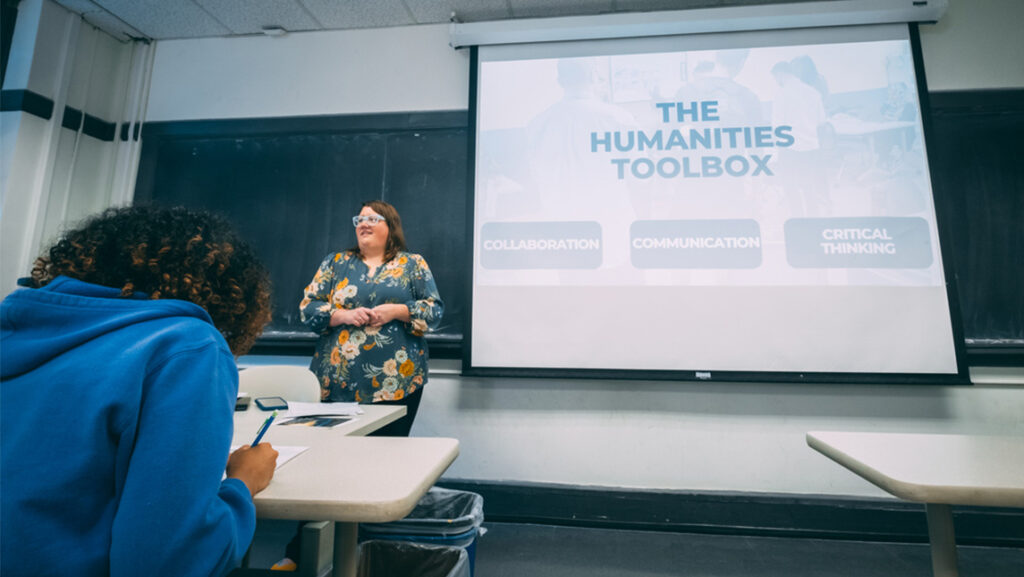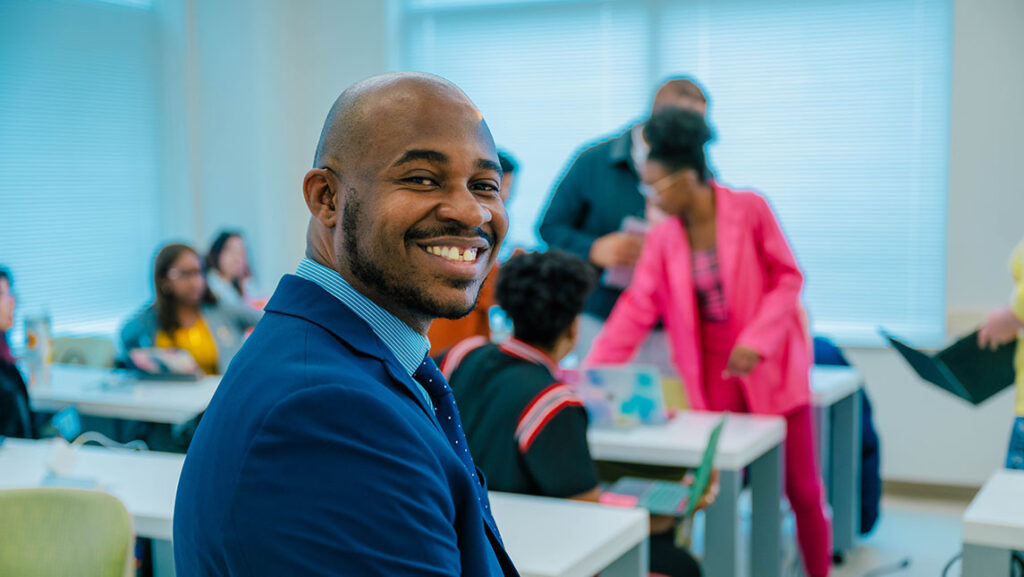Excerpt, spring 2016 UNCG Research Magazine
Most of us recognize the value of research. We’re also more than willing to reap the benefits of new technologies. Electric cars? Full speed ahead! Outer-space vaccine development? Ready for lift-off! Small-business innovation? Entrepreneurialism is the backbone of America!
But when we’re asked if we’re prepared to invest in these new technologies—if we want our tax dollars going to support one program over another—we need more information before answering so enthusiastically.
Most organizations echo our reservations. If they are to invest in research and development, they ultimately expect to see a payoff. International institutions, Congress, and even NASA have one resource in common when the time comes to evaluate investments, programs, and payoffs related to innovation: Dr. Al Link. The Virginia Batte Phillips Distinguished Professor in the UNCG Department of Economics has spent the past 30 years helping public and private entities assess how well their entrepreneurial efforts are working.
Communities of Innovation
Ever since Stanford Industrial Park was built in the early 50s, university research parks have provided places for experts and private partners to cultivate new technologies and support their regional economies through their innovations. Around the world, academic research and economic development interests converge in these high-tech facilities.
“After the publication of my book A Generosity of Spirit: The Early History of the Research Triangle Park in 1995,” says Link, “park directors from many countries starting calling asking for advice.” From South Korea and Australia to France and the UK, founders of these parks looked to Link’s expertise for help establishing themselves.
“Usually what they want to talk about is not a brick-and-mortar story, but ‘how do we put metrics in place at the beginning of a process so that we can evaluate our growth over time to be sure we’re meeting our goals and objectives?’” he explains.
Link’s advice applies to anyone wanting to measure the success of a policy or endeavor. “First, agree on relevant data and metrics for evaluation, such as the number of industry scientists teaching as adjuncts at the university; internships leading to jobs in the park; and university graduates taking part in the park.”
Then establish a sound infrastructure for data collection. “You need to create an ecosystem that is supportive of dialogue between industry and university scientists so that you can foster a synergistic relationship,” Link says. Hiring leaders who understand both the researchers’ and the industry’s goals—and can bridge the two with effective communication—allows the research park to be successful within its environment.
The most effective research parks continue to grow over time, increasing the number of employees and number of buildings that generate benefits for the regional economy. “Those that have done well in terms of growth are fluid and can adapt to changing economic environments,” Link explains.
Building ideas, not things, leads to longevity. “Pursuing basic research, not simply manufacturing a product, is the seed for continued economic growth,” he says.
Knowledge Transfer
Link’s work ranks him among the top 10 scholars in the world in a number of economic fields, according to Research Papers in Economics. He’s served as an advisor to the Departments of Commerce and Energy and the National Research Council. As the U.S. representative to the Team of Specialists on Innovation and Competitiveness Policies at the United Nations in Geneva (2007- 2012), he counseled with the world’s sharpest minds, advising European science ministers on the implementation of technology and innovation policies to stimulate economic growth and development.
But his scope of work expanded from international to intergalactic last year when Congress asked NASA for a report on how to expand the International Space Station’s (ISS) commercialization efforts. For about three years, a handful of companies had been conducting outer space research, and Congress wanted a status update and a plan for the future. “A widely cited and prominent scholar, Dr. Link was an ideal contributor based on his extensive knowledge of innovation, research and development, and public sector entrepreneurship,” says Patrick Besha, senior policy advisor at NASA who spearheaded the project to examine what he describes as a “particularly vexing problem.”
Link and his co-author, Dr. Eric Maskin of Harvard, were challenged with determining whether companies would be more or less willing to conduct research on the ISS if they had additional information on the risks and costs. They decided to ask the companies conducting research on the ISS one question: What do you know now that you wish you’d known before you engaged in this research?
“It was a very simple question,” Link says, “but we thought passing that type of information on to the next generation of firms would make their research process more efficient.” The economists’ findings confirmed the benefit of ISS research and identified valuable lessons for future ISS-engaged companies. For example, it takes longer than most firms expect to conduct research in outer space, and it costs more because it takes longer.
“Fortunately,” Besha says, “drawing upon the history of the ISS program, the economics of information, and a superb survey methodology, they concluded that improving access to information about past projects, experimental success rates, and the general process could lead to greater R&D and commercial growth.”
“Hearing other people’s success stories gives firms a lot more confidence in going where no man has gone before,” Link adds. This spring, NASA will release a book featuring the contributions of Dr. Link and other prominent economists.
Invention to Commercialization
As small firms and entrepreneurs find their footing in the business world, it’s not unusual for them to enlist the help of university experts in their field. Initiating that relationship is a smart move, says Link. “Young firms that have been in existence for just a few years only have so much knowledge,” he explains.
“They may have four or five scientists who know a great deal but not quite enough to complete their project.” The relationship with a university gives those scientists a broader perspective and expands their research base.
Establishing university partnerships was one of Link’s primary recommendations for small businesses when the National Research Council asked him to evaluate the effectiveness of the Small Business Innovation Research (SBIR) program in helping small firms commercialize their technologies.
After Link’s team delivered a report containing case studies and descriptive statistics, he testified before Congress to help lawmakers determine whether the program would be reauthorized.
“Eventually, the SBIR was reauthorized in 2012,” Link says. His testimony was influential not only because it provided a resource for Congress to make an informed decision but also because it sparked academic research on the SBIR program.
The benefits of Link’s expertise and expanded research on the SBIR transferred to North Carolina entrepreneurs when Link was later asked to help evaluate an SBIR-related N.C. program. “The North Carolina Board of Science and Technology has a program where they match some of the funding a N.C. firm receives from an SBIR program,” Link says. “The additional funds help ensure a firm’s success, and it was a privilege to help them evaluate our N.C. program and to provide a spillover benefit.”
Scholastic Impact
No matter the organization, Link says, growth and development hinge on a research-supportive environment. That’s especially true in an academic environment, and Link sees this first-hand in the UNCG Bryan School of Business and Economics, where he edits the international Journal of Technology Transfer, conducts research, engages in professional service, and teaches several graduate-level classes.
“It’s hard to think of another university that is more supportive of research than UNCG,” Link says. “Our administrators understand research as a critical role of a faculty member and applaud when the research can be brought back in the classroom.”
When asked what he finds most rewarding about his scholarship, Link turns the conversation to his students. “It’s most rewarding for me to be able to go into a graduate class and give real-world examples that bring these policy issues to life,” he says.
Link adds that university administrators who excelled in research before going into administration are behind UNCG’s strength in recognizing and encouraging exploration. “We have a wonderful dean at the Bryan School who understands the relationship between teaching and research, that one complements the other,” Link says. “So to the extent that I’ve been successful, it has been due to a supportive environment at UNCG.”




